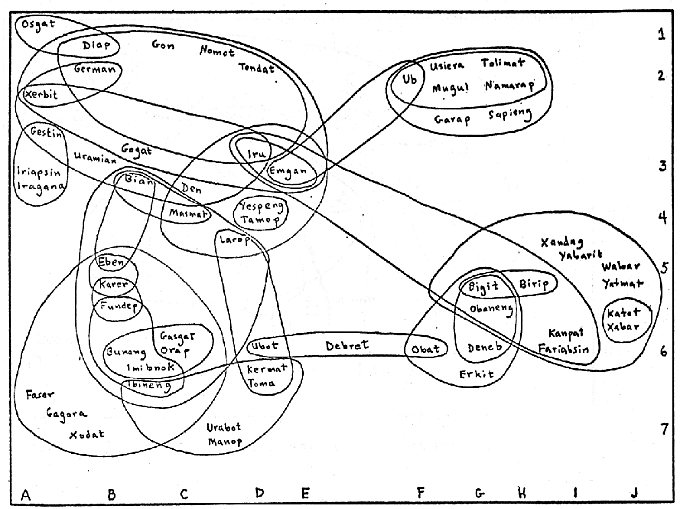Upon the arrival of Google+, it’s fun to revisit the insightful articles by my colleague Sune Lehmann on Google Buzz, Seinfeld, and overlapping community structure in social networks:
The fact that each of us has multiple social contexts (groups, communities, circles, or whatever you call it) is pretty obvious from our everyday life. For instance, the following figure (published in 1973) clearly demonstrates the pervasively overlapping community structure. I am sure that there are plenty of other examples that can be found in literature.
Gwe social organization (source)
Even though it sounds trivial, the multiplicity of our social relationship has not been fully recognized or incorporated in social network services. Most social networking services consists of only one type of relationships (e.g. friends). Maybe it’s not a big deal since people flexibly use different social network services for different social groups. But ignoring a fundamental organizing principle of social networks is often hampering: noise increases, worlds collide, and people are annoyed here and there. Companies have been experimenting some features (Facebook’s friends lists and groups, Twitter’s lists, etc.), but those features are superficial and hard to use.
Google+ is interesting because it is the first (main-stream) service to tackle this problem at the fundamental level: Google forces you to put your social contacts into multiple circles from the first place. This design principle is same as the idea behind Paul Adams’ inspiring slides on real world social networks, in which he nailed that the real world social networks with pervasive overlap is fundamentally different from the single-context model of many online social networking services.
Interestingly, there has been a similar trend in complex network research. Finding dense groups in networks has been one of the hottest topic (often called community detection or network clustering). Most work has been focusing on finding disjoint communities (=single context model) and didn’t consider the pervasive overlap (Here, I would like to distinguish pervasive overlap (where each and everyone has multiple contexts) from fuzzy overlap (where only a small portion of people has multiple contexts)) of communities, as you can see in one of the most comprehensive reviews by Santo Fortunato (With several notable exceptions such as Palla et al., “Uncovering the overlapping community structure of complex networks in nature and society”, Nature, 2005). Single context models are useful in many cases but they have a clear limitation in dealing with full-pledged social network data which will become more and more abundant & important in the near future. About a year ago (actually when Paul Adams’ slides became viral), James Bagrow, Sune Lehmann, and I also published an article that suggests a new viewpoint on this problem 1.
We are not the only one of course, and I think there is an increasing trend of research on the problem of overlapping community structure. I hope that we can better understand social networks by focusing on the pervasive overlap of community structure.
There may not be many publications (and data) from Google or Facebook about what they learn from their social networks. For example, I do not think that they will publish their core community detection algorithms. But I do hope that the competition towards better social networking services will spur more research on the complexity of social networks and will advance our understanding.
-
You can see my old slides from ↩
